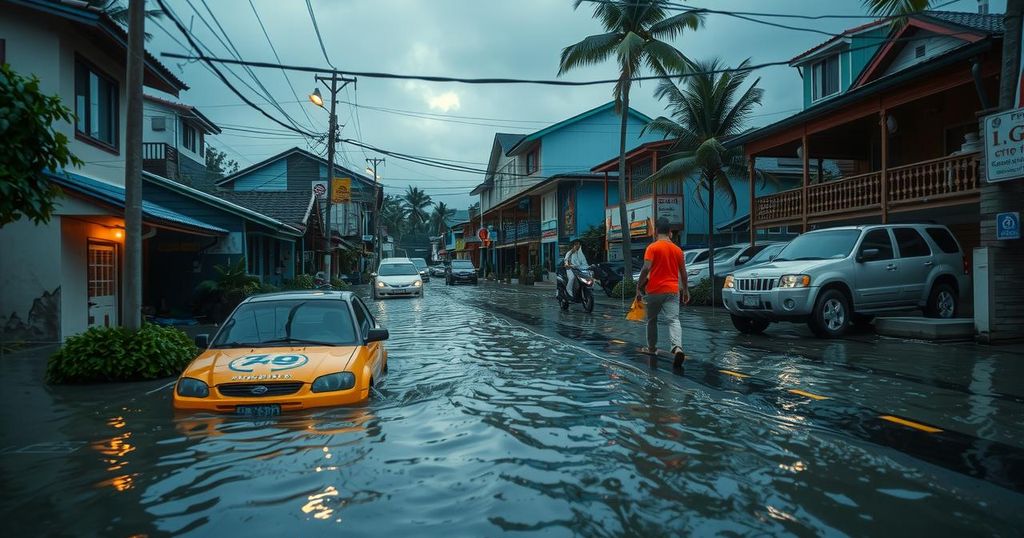Severe Flooding in the Philippines Due to Tropical Storm Toraji

Tropical Storm Toraji has caused severe flooding in northern Philippines, marking the fourth storm in three weeks. With maximum winds of 80 mph and heavy rainfall, significant evacuations took place in Cagayan Province. An additional storm, Ofel, is forecasted to hit soon, further threatening the recovery of affected areas.
The Philippines has been severely impacted by Tropical Storm Toraji, which has caused significant flooding in the northern regions of the country. This storm marks the fourth tropical storm to hit the archipelago in just three weeks, with Toraji making landfall as a typhoon near San Agustin in Isabela province. The storm produced maximum sustained winds of approximately 80 mph and heavy rainfall ranging from 7 to 15 inches, leading to rising water levels in local rivers, notably the Cagayan River, which surpassed critical flood thresholds. Local authorities, led by Mayor Maila Ting Que of Tuguegarao City, have promptly initiated evacuation protocols for residents in flood-prone areas. Approximately 561 families, equating to nearly 1,700 individuals, were evacuated from 35 low-lying villages. Evacuees are currently seeking refuge in community centers, schools, and with relatives. Concurrently, there is an impending threat from another storm, named Ofel, which is anticipated to make landfall on Thursday afternoon, potentially affecting Cagayan or Isabela provinces. This storm will be the fifth significant weather event to impact the Philippines within a month, following Tropical Storms Kristine and Marce, as well as Super Typhoon Leon. These recent storms have collectively wreaked havoc across numerous provinces, affecting over 4 million people, according to UNICEF. The Philippine Atmospheric, Geophysical and Astronomical Services Administration (PAGASA) reported that the nation experiences an average of 20 tropical cyclones annually, emphasizing the ongoing vulnerability of the region to extreme weather events.
The Philippines is situated in a region that frequently encounters tropical cyclones, with the average annual occurrence being around 20 storms. The country, comprising over 7,000 islands, is particularly susceptible to these weather phenomena due to its geographical location. The continual threat of storms significantly impacts local communities, infrastructure, and livelihoods, necessitating robust disaster preparedness and response strategies. Recent storms, particularly in the last month, have exacerbated these challenges, leading to widespread flooding, displacement of populations, and increased humanitarian needs.
In conclusion, Tropical Storm Toraji has underscored the vulnerability of the Philippines to extreme weather events, following a series of successive storms that have caused extensive damage and displacement. With forecasts indicating the imminent arrival of another storm, local authorities are faced with the urgent need to prioritize disaster response and ensure the safety of affected communities. The resilience and preparedness of the population will be crucial as the nation grapples with the ongoing challenges posed by climate change and natural disasters.
Original Source: www.foxweather.com








